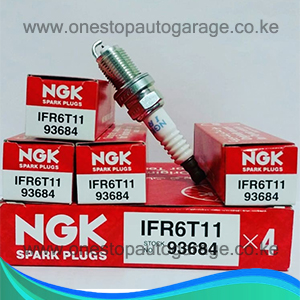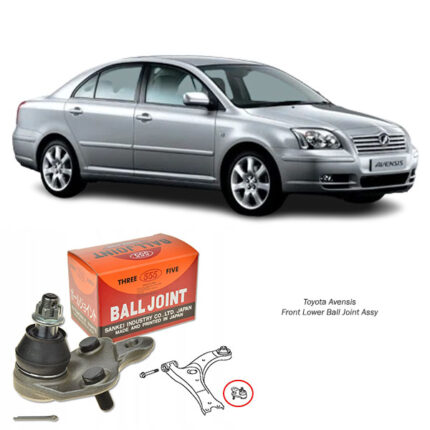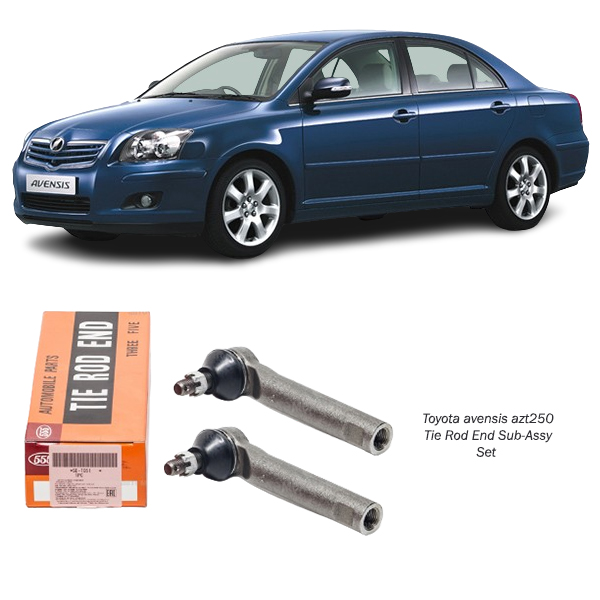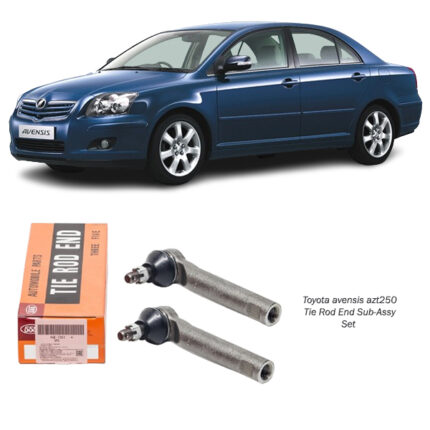Get Toyota avensis AZT250 Steering Tie rod End Set SET-051 in Kenya
The Steering Tie Rod End Set is a critical component of a vehicle’s steering system. It plays a vital role in translating driver input into precise wheel movement, ensuring the car responds effectively and safely. Tie rod ends connect the steering gear to the steering knuckle, allowing the wheels to turn while maintaining proper alignment and control. This guide explores the functions, design, benefits, maintenance, and replacement of tie rod ends in detail.
What is a Steering Tie Rod End Set?
The Tie Rod End Set consists of two primary components:
- Inner Tie Rod Ends: These connect directly to the steering rack or gear.
- Outer Tie Rod Ends: These link the inner tie rod ends to the steering knuckle.
Together, these components form a flexible link that allows for the transmission of motion from the steering gear to the wheels. They are essential for maintaining steering geometry, proper alignment, and vehicle stability.
How Tie Rod Ends Work
- Transmission of Steering Input:
When the steering wheel is turned, the steering gear (or rack and pinion) transmits motion to the tie rod assembly. - Flexible Pivot Points:
Tie rod ends are equipped with ball-and-socket joints that allow them to move in multiple directions. This flexibility is crucial for accommodating suspension movement while maintaining precise steering. - Wheel Alignment Maintenance:
Tie rod ends ensure that the wheels remain aligned to the desired angle, enabling accurate tracking and minimizing uneven tire wear. - Load Bearing:
In addition to transmitting motion, tie rod ends bear the lateral forces exerted during steering and maintain stability under various driving conditions.
Design and Components of Tie Rod Ends
- Ball-and-Socket Joint:
This joint allows for multidirectional movement and flexibility. It is housed in a metal casing and packed with grease for smooth operation. - Housing:
The outer casing is typically made of hardened steel or alloy to withstand significant mechanical stresses. - Stud and Nut:
The stud connects the tie rod end to the steering knuckle and is secured with a nut. Some designs include a castle nut and cotter pin for added security. - Dust Boot:
A rubber or synthetic boot seals the joint, protecting it from dirt, moisture, and debris while retaining lubrication. - Threaded Adjuster (Optional):
Some tie rod ends feature an adjustable threaded connection to fine-tune wheel alignment during installation or servicing.
Types of Tie Rod Ends
- Standard Tie Rod Ends:
These are commonly used in most passenger vehicles. They feature a simple design with a fixed ball-and-socket joint. - Heavy-Duty Tie Rod Ends:
Designed for off-road vehicles, trucks, and SUVs, these tie rod ends have reinforced construction to handle higher loads and extreme conditions. - Adjustable Tie Rod Ends:
These are often used in performance or racing vehicles. They allow for precision alignment adjustments, making them suitable for customized steering setups.
Functions of the Steering Tie Rod End Set
- Ensures Steering Precision:
Tie rod ends convert the rotational motion of the steering wheel into lateral movement, allowing the wheels to turn accurately in response to driver input. - Supports Wheel Alignment:
Properly functioning tie rod ends maintain the correct angle of the wheels, reducing tire wear and improving handling. - Absorbs Vibrations and Impacts:
The flexible joints of the tie rod end absorb shocks and vibrations from the road, contributing to a smoother driving experience. - Enhances Vehicle Safety:
Tie rod ends are crucial for maintaining vehicle stability, especially during turns or emergency maneuvers. A failure in this component can lead to a loss of control.
Signs of Worn or Damaged Tie Rod Ends
- Steering Wheel Play:
Excessive looseness or “play” in the steering wheel often indicates worn tie rod ends. - Uneven Tire Wear:
Damaged tie rod ends can cause misalignment, leading to uneven wear patterns on the tires. - Pulling to One Side:
A failing tie rod end can result in the vehicle pulling to one side, making it difficult to drive straight. - Clunking or Knocking Noise:
Worn ball joints in the tie rod end may produce clunking sounds, especially when turning or driving over rough terrain. - Steering Vibration:
If the tie rod ends are loose or damaged, the steering wheel may vibrate at higher speeds or when cornering. - Visual Inspection:
Cracked or torn dust boots, rusted components, or visible wear are clear indicators that the tie rod ends need replacement.
Benefits of High-Quality Tie Rod Ends
- Enhanced Steering Control:
Precision-engineered tie rod ends ensure smooth and responsive steering, improving driver confidence. - Extended Tire Life:
Properly functioning tie rod ends maintain wheel alignment, reducing uneven tire wear and extending tire lifespan. - Improved Vehicle Stability:
High-quality tie rod ends enhance the vehicle’s ability to handle sharp turns, rough roads, and sudden maneuvers. - Durability:
Premium materials and robust designs ensure that the tie rod ends withstand extreme stresses and last longer. - Reduced Maintenance Costs:
Durable tie rod ends minimize the need for frequent replacements and help prevent additional damage to related components.
Maintenance Tips for Tie Rod Ends
- Regular Inspections:
Check tie rod ends for wear, rust, or damage during routine vehicle maintenance. - Monitor Alignment:
Misalignment is often a sign of worn tie rod ends. Have the alignment checked periodically and after replacing tie rod ends. - Replace Damaged Dust Boots:
Cracked or torn dust boots expose the joint to contaminants, leading to accelerated wear. Replace damaged boots promptly. - Lubrication:
While many modern tie rod ends are sealed and maintenance-free, some older designs require periodic greasing. - Drive Carefully:
Avoid hitting curbs, potholes, or other road hazards that can damage tie rod ends. - Replace in Pairs:
When replacing one tie rod end, it’s often advisable to replace both the inner and outer ends on the same side to ensure even wear and performance.
Replacing Tie Rod Ends
- Tools and Equipment:
- Jack and jack stands
- Wrenches and sockets
- Tie rod end puller or separator
- Torque wrench
- Procedure:
- Lift and secure the vehicle on jack stands.
- Remove the wheel to access the tie rod end.
- Loosen the locking nut and detach the tie rod end from the steering knuckle using a puller or separator.
- Unscrew the tie rod end from the inner tie rod.
- Install the new tie rod end and adjust it to match the previous alignment settings.
- Reattach the tie rod end to the steering knuckle and secure it with a nut.
- Tighten all components to the manufacturer’s specified torque.
- Perform a wheel alignment after replacement.
Importance of Wheel Alignment After Replacement
Replacing tie rod ends alters the alignment settings, which can impact steering and tire wear. A professional wheel alignment ensures that the wheels are set to the correct angles, restoring optimal handling and performance.
Conclusion
The Steering Tie Rod End Set is a vital link between the steering system and the wheels, ensuring that the vehicle responds accurately to driver input. Regular inspection and timely replacement of worn tie rod ends are essential for maintaining vehicle safety, stability, and performance. Investing in high-quality tie rod ends and following proper maintenance practices can significantly enhance the driving experience while extending the lifespan of the steering system and tires.
Follow us on Facebook for more parts.





Reviews
Clear filtersThere are no reviews yet.